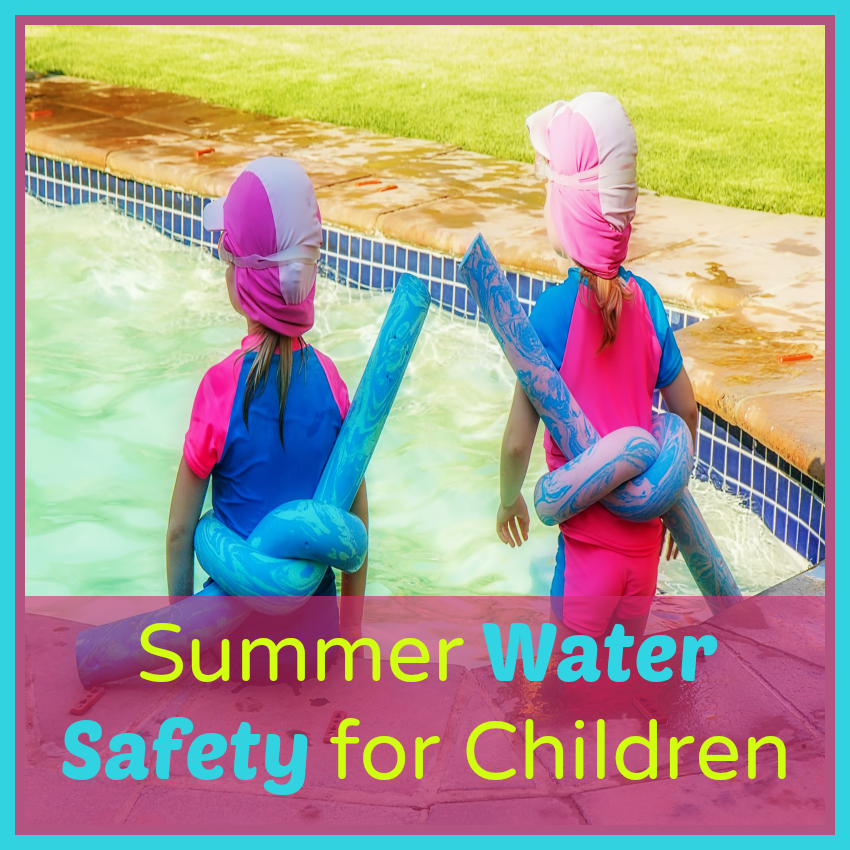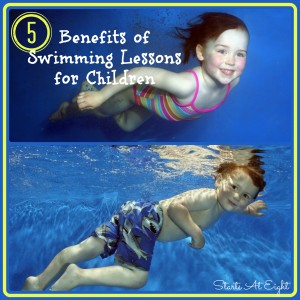Summer Water Safety for Children
Summer is finally here, and it’s time to think about summer safety for the kids. One of the most important issues to be concerned with during the hot summer months is water safety. Whether you’re spending time in or near pools, a pond, lake, ocean, or boat, it is a good idea to review important water safety tips to reduce the risk of dangerous accidents.

Adult Supervision is Key
The first thing to think about, anytime a child is in any kind of water situation, is adult supervision. “Drownings are the leading cause of injury death for young children ages 1 to 4, and three children die every day as a result of drowning,” according to the Centers for Disease Control and Prevention (CDC).
An adult-child ratio of 1:1 is best when enjoying water-related activities, particularly for younger children or kids who don’t yet swim well, and minimizing distractions is ideal. If there is a distraction, pull the child out of the water until you can be completely, 100% focused on that child. This rule is good in any circumstance involving water, including when your children are using bathtubs, toilets, baby pools, and the like.
Pool Safety
Swimming is a great physical activity for children, and it has excellent health benefits. However, there are some serious safety concerns that should be addressed while your children are enjoying a refreshing swim.
One potential safety issue surrounding the use of swimming pools is the possibility of acquiring recreational water illnesses. These illnesses are caused by chemicals and germs in the pool water. That’s why it’s important to take steps to minimize the presence of substances such as feces, urine, dirt, and sweat in the water, particularly in shared public swimming pools.
Kids need to go on regular bathroom breaks, and children and babies with diapers need to be checked every hour. Change the child in a bathroom, not near the pool where germs can enter the water. Finally, ensuring that all swimmers are showering before using the pool is a key step in keeping the water clean.
Teaching children to swim should be a priority for all parents. Formal lessons are the best approach, and children can learn to swim at a young age. Be sure there is some kind of fencing around your swimming pool at home, if you have one, so that children cannot enter the pool without supervision. You may even want to think about installing an alarm that will alert you if the fence is touched.
Another safety tip is to learn CPR (Cardiopulmonary Resuscitation), a valuable skill that could help save someone’s life at the pool or anywhere else. As stated before, adults need to be watching children whenever they’re around water, no exceptions. With younger children, touch supervision should be practiced. This means that an adult is within touching distance of the child at all times. It is also essential that you keep at least one portable phone out in the pool area whenever someone is using the pool.
Boats and Other Water Activities
When on a boat, everyone should be safe and wear a life jacket. Life jackets need to fit properly, or they may not work correctly. A life jacket should not be loose, and all straps should be belted. People don’t enjoy wearing life jackets, but they prevent drownings and are essential when boating. Floaties, rafts, and other blow-up toys, while useful at times, are not a substitute for a well-fitting life jacket.
When swimming in any body of water, do not let your child swim alone, even if they are a strong swimmer. Be sure your child knows not to dive without asking an adult first so that a responsible adult can ensure the depth is suitable for safe diving. When swimming in an ocean, it is crucial that children are taught about rip currents. If caught in a rip current, they need to swim parallel to the shoreline until out of the current, then make their way back to shore.
Additionally, the risks of accidental drowning and other water-related accidents are higher when swimmers are physically exhausted. If your children are spending time on their tablets or cell phones late at night and are not getting enough rest, they’ll be less able to keep themselves afloat and tread water until help arrives if they do have an accident in the water.
Enjoy Your Summer!
While it’s easy to get concerned when thinking about water hazards, and you might be tempted to avoid swimming activities altogether, most children can swim safely when properly supervised and the appropriate safety steps are implemented. Some of the most important takeaways are:
- Always have eyes on your child when they’re in any kind of water.
- For the younger children, practice touch supervision when they’re in any kind of water.
- Think about enrolling your child in formal swimming lessons.
- Always insist that a child wear a properly fitted life jacket when on a boat.
- Keep a cell phone around when you’re doing activities in the water.
- Think about learning CPR, which could save your child’s or someone else’s life.
Practice the water safety tips listed in this article, and have a safe, healthy summer!
Author Bio: Sean Morris is a former social worker turned stay-at-home dad. He knows what it’s like to juggle family and career. He did it for years until deciding to become a stay-at-home dad after the birth of his son. Though he loved his career in social work, he has found this additional time with his kids to be the most rewarding experience of his life. He began writing for LearnFit.org to share his experiences and to help guide anyone struggling to find the best path for their life, career, and/or family.
**Image via Pixabay by stevepb







